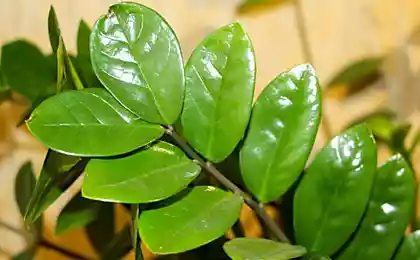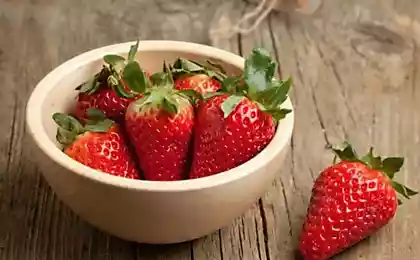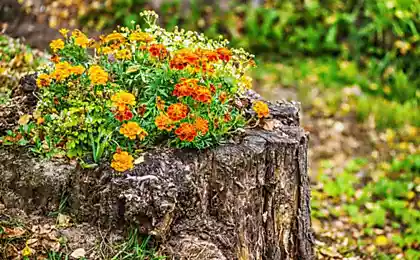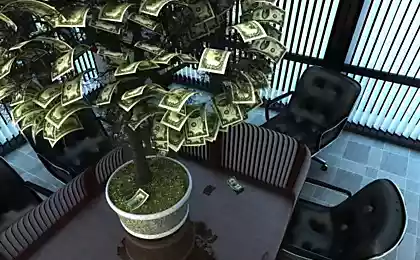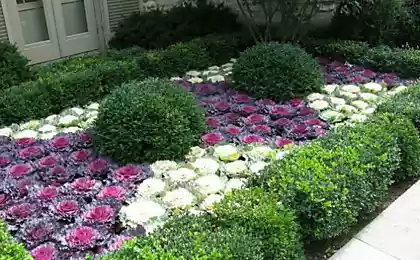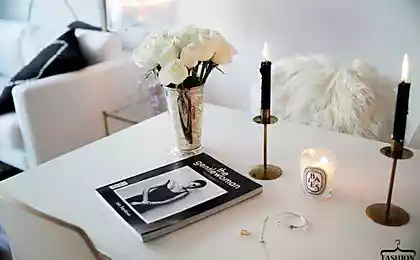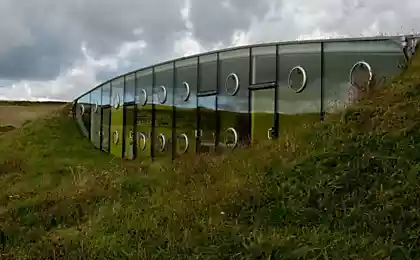431
Exotic zamioculcas: cultivation and care

Looking for a bold, stylish plant, quite easy to care for, you should look at the zamiokulkasa zamielistnyy (Zamioculcas zamiifolia). Its glossy green leaves look very decorative and can decorate any interior.
Many call it "Samia" that is not quite right. Same is another plant, zamioculcas similar to the shape of leaves. Incidentally, another popular name of zamioculcas — a "dollar tree".
Despite being the birthplace of zamioculcas arid Africa (Kenya), it thrives in our homes, in low light conditions. This applies showy plant poisonous to the family Araceae. Contain acrid juice of the tubers and the leaves of the plant.
In comparison with other representatives of this family, such as dieffenbachia, Calla, is very demanding of high humidity air and soil, zamioculcas does not require a particularly frequent watering. It can be watered every 2 weeks and only occasionally spray the leaves.
The plant is very decorative. Where would you put it either, everywhere it will look very impressive.
The trunk of the plant has not. Under the ground is a large tuber, from which depart about 6 high, dark green, very shiny leaves.
Leaf shape pinnatisect. At the base the leaves are thicker, up narrowed. New leaves can grow back a couple of times a year, if the plant is getting enough light and heat.
Flowering zamiokulkasa not as beautiful as it is rare, in 6 years I have this plant it bloomed. The zamioculcas blooms when the plant is very Mature. The flower itself is similar to cream the cob, wrapped in a green bract.
Care for zamioculcas
As I said, zamioculcas unpretentious, special conditions of existence is not required. Overdrying even do not harm them, because the root stores enough moisture. Somehow the month has gone on vacation, leaving him without irrigation. Drafts are also not afraid of him. And in the summer generally stand on an open terrace.
Lighting
Unlike many plants, prefer certain directions, zamioculcas can grow in the southern and Northern Windows. I have it growing close enough to the window with diffused lighting, while the kitchen is generally on the refrigerator opposite the window. But when moving in the corner where the light is less, the leaves were born weak and rare. Therefore, a strong plant will be only when a sufficient amount of light.
Temperature
The temperature range in which it may grow this plant are extensive, but do not forget that this "child of Africa" still likes the heat. In winter the temperature should not drop below 16-18 °C.
Humidity and watering
Dry air for zamiokulkasa is not critical, but in my plant, I can say that to wipe the leaves from dust is necessary and spraying like. All the beauty in these elegant glossy leaves. But pour not worth it. In winter, watering is rare, only after the soil completely dries out.
Fertilizer
Your zamioculcas I fed complex fertilizer for decorative-deciduous, but sometimes buy fertilizer for cacti or succulents (which is probably preferable, but my pleased with everything will offer him). Usually fertilized in the periods of the formation of leaves. It is now the end of January, but already from the beginning of January my plants started to increase foliage.
Transplant
Young plants are transplanted more often than an adult. This is because when the tuber fills the pot, the plant begins to grow leaves. Each subsequent pot should be slightly larger than the previous one. But the Mature plant is transplanted is extremely rare. When transplanting is necessary to lay a good drainage layer. I have a large gravel.
Methods of reproductionyou'll hear, how easy it is to propagate zamioculcas. It is believed that he may reproduce any part:
Division of bulbs Leaf cuttings, separated from the sheet Leaves, I tried to propagate in the water the whole sheet, cut off almost at the base. Month is in the water and no spine. On the advice of experts in a few days dried leaves, then dipped in kornevin and dripped in a light sandy soil, but the result is not achieved.
The multiplication of leaf cuttings is somewhat better, but because of the slow growth to wait for the desired result more difficult. If you decide to, then put the stalk in water, it will quickly take root. After you sprinkle it with a mixture of soil and wrap in a warm place. Lighting should be diffused. And then about a year you will grow a "baby" to get the nodule, measuring only about 2 cm.
The most reasonable method for me is propagation by division of rhizomes. But several times I faced the problem of damaging the roots. The parent plant then sick for a long time. The fact is that when the pot becomes too small, all the bulbs are intertwined with the roots and occupy almost entire capacity of the pot. Try to minimally damage the roots when transplanting.
The composition of the soil for reproduction
For several years, I buy ready-made soil for cacti + coarse gravel to transplant their plants. And if you decide to prepare your own soil mixture, you will need loam, leaf soil, sand and peat in the ratio (1:1:1:1). The plant prefers soil with normal acidity.
Diseases of zamioculcas
You will see on your plant is yellowing leaves with brown spots, know that it is the first symptom of root rot. You filled it! In this case it is better to overdry than to pour.
Poisonous zamioculcas ofthis beautiful plant are poisonous juice, even when dividing can damage the skin juice of the tubers. Therefore, simple rules are in the form of gloves when transplanting and failure from eating plants will save you from his juice. published
Source: www.7dach.ru
